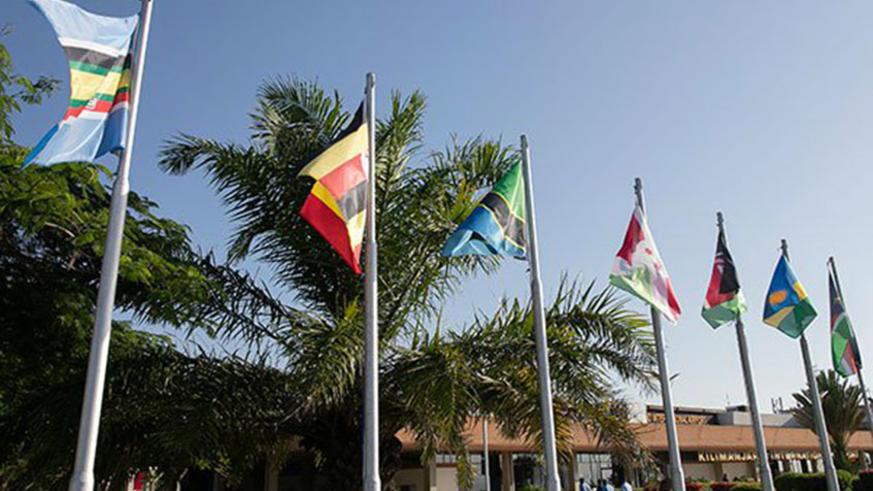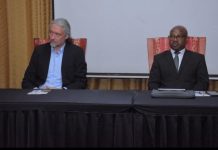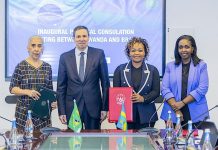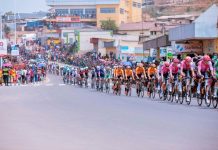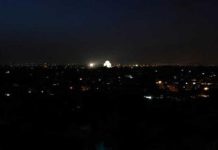Africa-Press – Rwanda. On Monday June 20, six Heads of State of East African Community countries met in Nairobi, Kenya to deliberate on the security situation in eastern DR Congo.
The attendance and decisions taken reflect the gravity and urgency with which the regional leaders view the security situation in DR Congo. And well they should.
The meeting comes in the wake of renewed fighting between the Congolese army (FARDC) and the Congolese rebel group, M23. The latter, like they did nearly ten years ago, has given the government army a bloody nose. Hence the scramble to find a solution.
The renewed fighting has rekindled hate speech and threats of genocide against Kinyarwanda-speaking Congolese, especially the Tutsi in an eerie reminder of the Genocide against the Tutsi in Rwanda in 1994.
Of equal concern has been the collaboration between the FARDC and various Rwandan armed groups, especially the genocidal FDLR, in destabilising Rwanda.
Uganda and Burundi also have their own security concerns related to insecurity in the east of DR Congo.
At the end of their meeting, the leaders of East African Community countries announced measures to rid DR Congo of all the armed groups and restore peace and stability to the region. Will they be effective? That, of course, is everyone’s wish. But, based on experience, even the most optimistic will have their doubts.
They asked the parties to the insecurity in DR Congo to be of good behaviour. Stop fighting, lay down arms, embrace and make up and peace will return. The armed groups and the government are not particularly well-known for that sort of thing. Good faith and trust as well as good sense are not their strongest points. And then no one seems to want to address what produces the conditions of insecurity.
This time, however, there seems to have been some rare candour among the leaders. They appear to have acknowledged one major weakness of the DR Congo government: the absence of the state in the east of the country. In their communique, they say they commit to “…a unified, secure country, with coherence and credible institutions of central government exercising full territorial authority…” Clearly that is lacking in the east.
The result of this weakness has been the surrender of authority to civil society and various armed groups. The ball is now in the DR Congo government’s court. Will they play to win? And how soon?
The meeting also endorsed the plan, first announced by President Uhuru Kenyatta of Kenya last week, to deploy an East African Force to the region to stabilise and secure the peace in DR Congo.
It is not the first time an external force is being deployed to sort out security issues in that part of DR Congo. Results have been mixed: some success, but generally things remain as they have been.
What will this East African force achieve that others before it have not? Very little, according to experts on security in the region. It is only adding another force to an area already heavily militarised and contributing to more confusion and inaction.
For over two decades, there has been a 20,000 strong United Nations force, first as the UN Mission in DR Congo (MONUC) and later as the UN Stabilisation Mission in DR Congo (MONUSCO) to bring peace and stabilise the region. MONUSCO was particularly authorised to use all necessary means to carry out its mandate, which among other things relates to the protection of civilians under imminent threat of physical violence and to support the government of DR Congo in its stabilisation and peace consolidation efforts.
It has done none of these. Civilians continue to suffer at the hands of armed groups. Indeed, MONUSCO is said to have contributed to the violence with some of its forces reported to sell arms to the groups or involvement in illegal mining and sale of minerals.
Later a UN intervention brigade was created to flash out all the negative forces in the east of DR Congo that also cause insecurity in the neighbouring countries of Rwanda, Burundi and Uganda. It only succeeded in defeating M23, which appears to have been its sole target.
The real negative forces such as the genocidal FDLR and its different offshoots, the Ugandan ADF, various Burundi rebel groups and Congolese Mai Mai factions remained intact and continued to cause mayhem.
M23 has now re-emerged largely because of the failure of a political process to address their grievances and we are about to see another force with a similar mission get drawn into the mire of DR Congo. The question arises: will the new force end up the same way, defeat M23 and leave it at that?
The new East African force might fail for the same reasons the UN forces have failed. The reason they often cite is that they cannot fight forces they cannot see. They are probably right.
The FDLR and different Mai Mai factions are part of the FARDC, the Congolese army. You cannot fight them unless you fight the Congolese army and that will not happen under this arrangement.
Part of the solution then is for FARDC to eject these armed groups from its ranks. Isolated and without official protection they can then be neutralised. But that also is unlikely to happen since they are some of their best officers and fighters, and also pawns in relations with neighbours.
Any arrangement that does not address the security concerns of the DR Congo’s neighbours, especially by removing all armed threats from their common borders, stands little chance of success.
For More News And Analysis About Rwanda Follow Africa-Press

